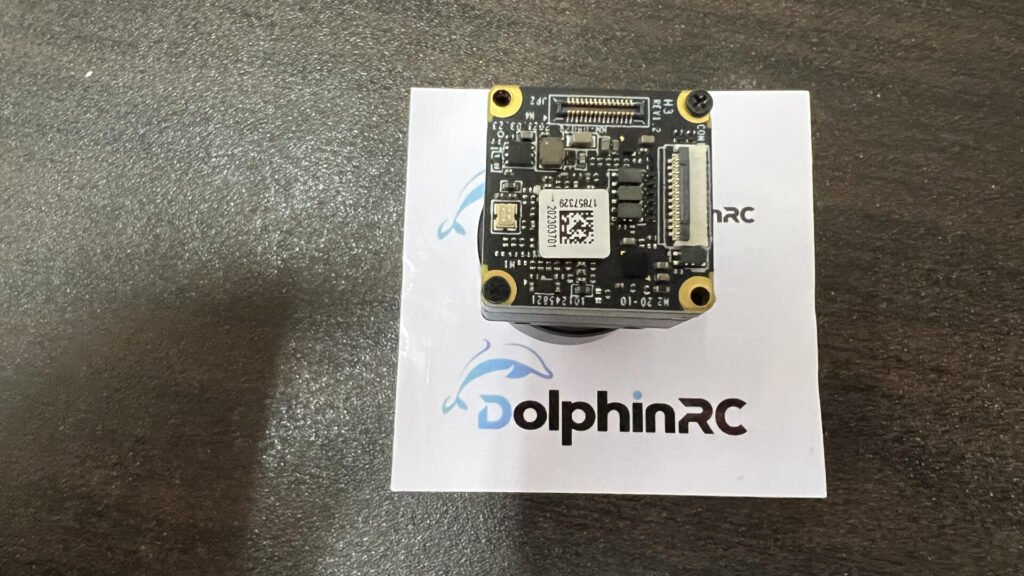Need help? Send mail:
support@dolphinrc.com
DolphinRC Thermal Analog CVBS Camera Review
I am eager to share my insights and experiences with this product while also comparing it to other brands in the thermal camera market. I often seek tools that enhance my flying experience, particularly for applications like wildlife observation, search and rescue, and general exploration and even just for fun. Here’s a detailed review of my experience and how this camera has performed in various situations.

Table of Contents
ToggleUnboxing and Initial Impressions
What we are sharing today is the T640 USB 9MM Version camera. Inside the box, I found the camera itself, and some mounting accessories(M1.6*5 screws,M1.6*6 screws ). The camera’s compact design allows for easy integration onto my drone without adding excessive weight.
The build quality of the camera is solid. It feels durable yet lightweight, which is essential for FPV flying. The materials used seem to be of high quality, ensuring that the camera can withstand the rigors of outdoor use.

Setup Process
Setting up the DolphinRC Thermal Camera was straightforward.You can followed the instructions in the manual, which were clear and concise. The camera uses a CVBS output, which is compatible with most analog video transmitters (VTX). I connected it to my existing VTX without any issues.
One aspect I appreciated was the adjustable settings for brightness and contrast. This feature allowed me to fine-tune the image quality based on different lighting conditions. The camera also supports both PAL and NTSC formats, giving me flexibility depending on my needs.

Image Quality
The image quality of the DolphinRC Thermal Camera is impressive for its price range. With a resolution of 640×480 pixels, it provides clear thermal images that are useful for various applications. The sensitivity is around 30mK, which means it can detect slight temperature differences effectively.
During my initial flights, I tested the camera in different environments—ranging from sunny afternoons to cooler evenings. In bright sunlight, the thermal imaging was still visible, although some glare was noticeable. However, as the sun began to set, the camera excelled at picking up heat signatures from animals and even people at a distance.

I also conducted a few night flights using this camera. The thermal imaging capabilities truly shine in low-light conditions. It was fascinating to see how well it picked up heat signatures in complete darkness, making it an excellent tool for nighttime operations.
Field Testing
I took my drone equipped with the DolphinRC Thermal Camera on several field tests. One memorable outing was at a local park where I wanted to observe wildlife. As I flew over a wooded area, I spotted deer using the thermal imaging feed on my monitor. It was incredible to see them moving around undisturbed by my presence.
Another test involved searching for lost items in an open field. Using the thermal camera helped me locate several objects that were otherwise invisible to the naked eye during daylight hours. This capability will be invaluable for search and rescue missions or even just when exploring new areas.
Performance in Different Conditions
The DolphinRC Thermal Camera performed admirably under various weather conditions. On one occasion, I flew during light rain; while I took precautions to protect my drone, I noticed that the camera continued to function without any issues. The IP67 rating gives me confidence that it can handle some exposure to moisture.
However, I did notice that extreme cold temperatures affected battery life slightly during extended flights. While this is not uncommon with electronic devices exposed to cold weather, it’s something to keep in mind if you’re planning long-duration flights in winter conditions.

User Experience
Using this camera has been a joy overall. The controls are intuitive; adjusting settings mid-flight is easy without distracting from piloting my drone. The image transmission delay is minimal, allowing for real-time adjustments based on what I see during my flights.
Moreover, the integration with my existing FPV setup has been seamless. The video feed quality has been stable throughout my flights without any noticeable interference or dropouts.
Conclusion
In conclusion, my experience with the DolphinRC Thermal Analog CVBS Camera has been overwhelmingly positive. It offers excellent thermal imaging capabilities at an affordable price point for FPV pilots like myself who want to expand their flying toolkit.
Pros:
- High-quality thermal imaging with 640×480 resolution
- Compact and lightweight design
- Easy setup and integration with existing VTX systems
- Good performance in low-light conditions
- Durable build quality
Cons:
- Some glare issues in bright sunlight
- Battery life can be affected by extreme cold
Overall, I would highly recommend this camera to anyone interested in enhancing their FPV flying experience with thermal imaging capabilities. Whether you’re using it for fun or practical applications like wildlife observation or search operations, it’s a valuable addition to any FPV pilot’s gear.
Catalogue
By using this website you agree to our Privacy Policy.
